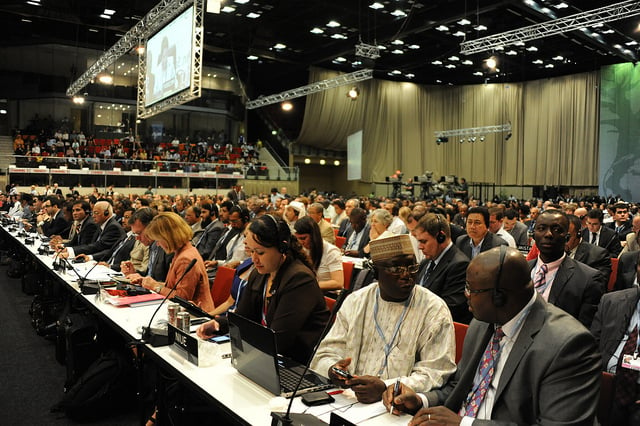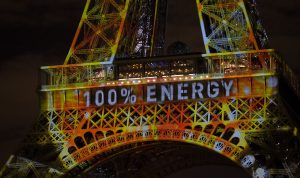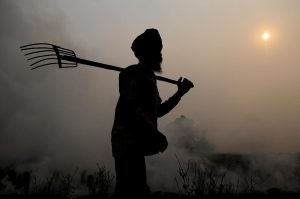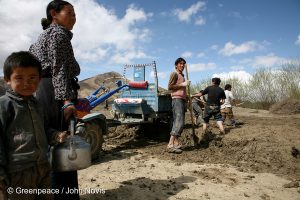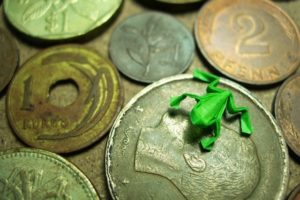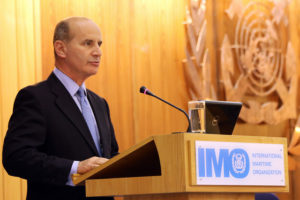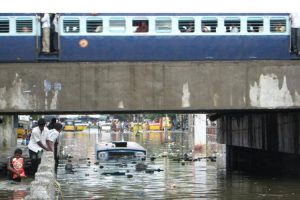In climate negotiations, countries usually do not act alone – they act in blocs. These blocs are often overlapping and their shifting as well as relatively constant positions can be confusing. They will be especially important during a climate summit that is expected to deliver an agreement with many implications for the world economy in the next decade. The way these shifting alignments work will to a large extent determine the strength of the Paris agreement, so it becomes important to understand them.
This is how they line up:
Umbrella group
This is a group of countries which is a mix of developed and some emerging economies. Big developed country carbon emitters like Australia, Canada and the US are an integral part of the Umbrella group. In recent times the group has maintained that the greenhouse gas emission reduction needed to keep temperature rise within two degrees Celsius should come from all countries including developing countries. Unless China and India are part of any deal for emission controls, the group will not be a part of it. Further, it maintains that the stringency of reporting and accounting for emissions should be same for all countries. This group does not believe that the difference between Annex I (developed) and Non-Annex I (developing) countries created by the Kyoto Protocol should exist. It holds that responsibility for emission reduction ought to be determined on the basis of emissions of the day rather than on historic levels of emissions.
Currently, the focus of the group is to oppose assessments of the INDCs that they have put forward, and also the level of financial and technical support they are actually putting on the table. For them, issues of transparency, reporting and compliance are vital. The US, which leads the group, now has bilateral understandings with China and India and expects that this will tone down opposition during negotiations. Other group members such as Japan and Australia have come up with weak INDCs, leading to severe criticism from climate activists.
EU group
The European Union approaches climate negotiations as a group and it is till now the only big group to have undertaken some actions as agreed in the UN convention. However laggards in the EU like Poland have held it back from further emission reduction commitments. Recent commitments of the EU do not reflect high ambition and also the much needed science-based targets to reduce emissions. Further, the performances of the group in providing fast start finance to developing countries has been muddled due to lack of transparency and shifting of aid money to climate actions. This group informally maintains that emerging economies should commit to emission reductions as part of the new 2015 deal and should also contribute substantially to emission reductions before 2020, when the 2015 deal is supposed to kick in.
It has recently been argued that the tacit agreement between the EU-AOSIS-Cartagena-AILAC groups has created new momentum in the UNFCCC negotiations on a number of issues. This is the root cause of tensions between the EU on one hand and the G77 and China group on the other over lots of important negotiating elements. Since this year’s COP presidency is with EU member France, the group has been busy in diplomatic missions, but their joint INDC has still disappointed developing countries. There is talk that the EU can do more, but is holding back on that as a negotiating card.
BASIC group
This group was formed as a reaction to the ever increasing pressure on big developing countries Brazil, South Africa, India and China. In this except India all countries have moderate to high levels of per capita emissions. Further, with the recent developments of China voluntarily agreeing to a peaking year for its emissions, other countries in the group are facing fresh challenges. The group has publicly maintained the need for developed countries to take the lead in emission reductions and also to fulfil the support needed for developing countries through finance and technology for undertaking actions. In recent times, the group has maintained a broad common position on various important aspects of negotiations, but they differ in their detailed positions. The main thrust of the group is to put the issues of equity and access to carbon space for development on the agenda for the 2015 agreement. But they have so far failed to provide any operational guidelines on the equity question.
Despite a number of meetings of BASIC ministers during 2015, their level of mutual engagement fell during the year. The situation has been further complicated because this year South Africa is the rotating chair of the larger G77 and China group. It is now clear that India and China do not believe the tactics of South Africa on equity and differentiation issues. The concept of Equity Reference Framework, proposed by South Africa and partially addressed in the negotiations, has broadened the gap between the members. Brazil has failed to convince others on the issue of their perception of graduation framework using differentiation principle in the form of Concentric Differentiation. The main thing that holds the group together now is the need for principled opposition to any attempt of breaking the binary differentiation between rich and poor nations, plus the demand for a roadmap for the developed world to pay $100 billion a year by 2020.
LMDC group
This is a porous group of 33 developing countries who are regarded in the climate negotiations as a group of elders. This group of Like Minded Developing Countries (LMDC) in the recent past has been seen as the stumbling block by the EU, AOSIS and AILAC groups. The main demand of the LMDC group is to maintain the binary differentiation between developed and developing countries. It vociferously asks developed countries to meet the commitments they have made without necessarily spelling out the actions to be taken by developing countries. The group has been the centre of attention in recent times with its strong position on the issues of emission reductions actions by developing countries, climate finance and means of implementation.
There is a possibility that India and China may break away from this group if Saudi Arabia and other OPEC countries force the Paris summit towards a Copenhagen-like fiasco.
Cartagena group
This is a group of countries with representatives from the Umbrella group, least developed countries (LDC) and small island developing states (SIDS). Its position is usually a nuanced variant of the EU position, and it does not have a very strong position on sticky issues such as climate finance and emission reduction commitments. The Cartagena group’s main objective over the years has been to moot innovative thinking which sometimes extends the interpretation of the UN convention, maybe even in a manner that may be seen as misrepresentation of the principles of the convention. This group is seen by observers as the one that will soften the reactions of countries against the strident positions of the Umbrella group. In recent years, this group has maintained the need for contribution from all countries to meet temperature limits and has officially stated the need for emerging economies to take higher emission cuts. It is regarded by EU, Umbrella group and other developed countries as one of the progressive groups in climate negotiations.
G77 and China group
This is the overall group of all developing countries, and the number of member countries is now 134, well above the original 77. It is a fairly amorphous group with lots of differences among its members. But so far it has stuck to a common position on critical issues such as loss and damage, and adaptation, while individual countries and blocs within the group freely articulate differences on other issues.
Africa group
This is one of the largest blocs within the G77 and China group. This bloc consists of developing countries from Africa. In recent years, it has been playing an important role in keeping the two degree limit in focus, when that was in danger of falling off the table. The bloc is one of the strongest in asking for stringent action from developed countries and seeking finances to combat climate change. This group aligns itself with G77 and China on most issues. So does another bloc – that of the Least Developed Countries (LDC) – though during the 2009 Copenhagen climate summit the LDC bloc found itself at odds with the BASIC bloc, and said so quite openly, though both are members of the G77 and China group.
In recent months, the key issues for the group have been financing and actual implementation of the technology mechanism. However, this group is highly divided on the issue of climate resilient agriculture, which some countries support and others oppose on the ground that it is being pushes by rich countries.
ALBA group
In many ways, this is the group most stridently opposed to the Umbrella group, the one most stridently demanding GHG emission reductions from developed countries while not conceding an inch from its own side. The group – formally called Bolivarian Alliance for the People of Our America – has nine member countries, though the most vocal during climate negotiations are Venezuela, Bolivia, Cuba and Ecuador, perhaps in that order. During the 2009 Copenhagen climate summit, this group was catalytic in ensuring the breakdown of a formal agreement in the wake of backdoor negotiations between the US and the BASIC group. Its delegates repeatedly pointed out the weaknesses of the behind-the-scenes agreement, so that the deal could not be formalised in the plenary session of the COP.
AOSIS group
The Association of Small Island States (AOSIS) has always had a strong presence in climate negotiations, pointing out that the survival of their countries is at stake, as sea levels rise due to global warming. The group made a valiant attempt to bring down the acceptable temperature rise from two degrees Celsius to 1.5. At times the AOSIS group has aligned with EU to push for stronger emissions reductions action by all countries and has thus invited the ire of emerging economies in the BASIC group. The bloc called Small Island Developing States (SIDS) often takes the same position as AOSIS in climate negotiations.
The position of this group is closest to that of climate activists from rich countries. They want emissions reductions on the same principle by rich and emerging economies, while other developing countries are placed in a separate category.
Fluid blocs
Almost every country is a member of more than one bloc, and some countries have changed blocs since climate negotiations started. Although all UN decisions must be taken by consensus, these fluid blocs can swing the balance of the negotiations perceptibly.
